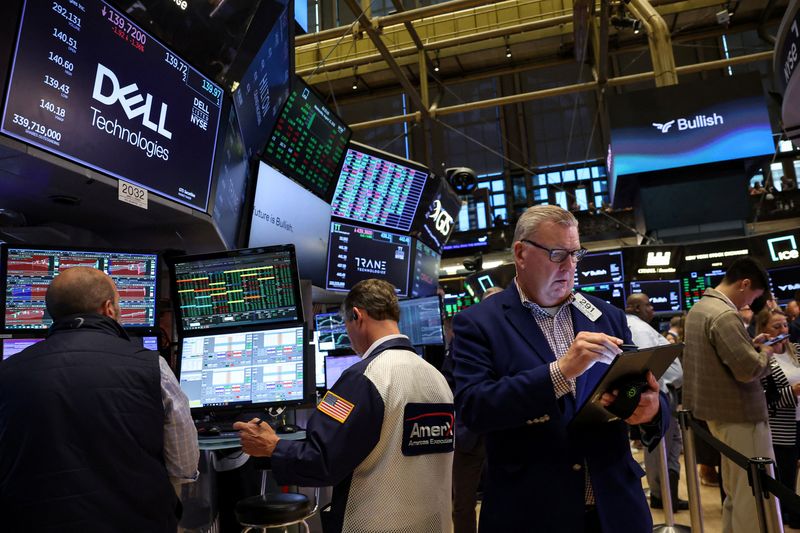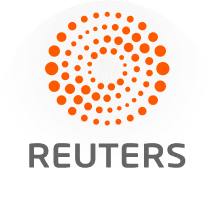
By Saeed Azhar, Johann M Cherian and Sanchayaita Roy
NEW YORK (Reuters) -The benchmark S&P 500 and Nasdaq indexes hit new closing highs for the second straight day on Wednesday on hopes that the Federal Reserve was getting close to a monetary easing cycle.
But the market reflected weakness in some technology stocks after the previous day's strong gains.
Signs that U.S. tariffs on imports have not fully filtered into headline consumer prices came as a relief for investors this week as they seek insight on the impact of trade uncertainty on the economy.
Some large technology stocks including Nvidia, Alphabet and Microsoft - among the so-called Magnificent Seven stocks - closed lower as investors searched for new growth drivers.
"Valuations are elevated. I do think, though, at the end of the day, the key will be the delivery of earnings, and that's what we're seeing," said Katherine Bordlemay, co-head of client portfolio management, fundamental equities at Goldman Sachs Asset Management.
She said the dispersion of stock-level returns in the U.S. is at one of the higher levels of the last 30 years.
Apple rose 1.6% after Bloomberg News reported the company is plotting expansion into AI-powered robots, home security and smart displays.
The Dow Jones Industrial Average rose 463.66 points, or 1.04%, to 44,922.27, the S&P 500 gained 20.82 points, or 0.32%, to 6,466.58 and the Nasdaq Composite gained 31.24 points, or 0.14%, to 21,713.14.
The Russell 2000 index, which tracks rate-sensitive small-cap companies, rose almost 2% to hit a six-month high.
Traders are now fully pricing in a 25 basis-point interest rate cut, according to the CME's FedWatch Tool. The central bank last lowered borrowing costs in December.
Treasury Secretary Scott Bessent said on Wednesday he thought an aggressive half-point cut was possible, given recent weak employment numbers.
Investors were also taking notice of other sectors following the recent tech-led rally in U.S. stocks that has pushed valuations of the S&P 500 above long-term averages.
Healthcare stocks, which have been beaten down for much of the year, rose 1.6% to rank among the leading sectors in the 11 S&P 500 sectors.
Chicago Federal Reserve President Austan Goolsbee said on Wednesday the U.S. central bank is grappling with understanding whether tariffs will push up inflation just temporarily or more persistently, which would inform its decision on when to cut interest rates.
CoreWeave, which is backed by Nvidia, fell almost 21% after the AI data center operator reported a bigger-than-expected quarterly net loss.
Paramount Skydance jumped 36.7% as the company won exclusive broadcasting rights to the Ultimate Fighting Championship for seven years.
Advancing issues outnumbered decliners by a 4.05-to-1 ratio on the NYSE. There were 630 new highs and 56 new lows on the NYSE.
On the Nasdaq, advancing issues outnumbered decliners by a 2.53-to-1 ratio.
The S&P 500 posted 40 new 52-week highs and 2 new lows while the Nasdaq Composite recorded 149 new highs and 69 new lows.
Volume on U.S. exchanges was relatively light, with 16.9 billion shares traded, compared with an average of 18.3 billion shares over the previous 20 sessions.
(Reporting by Saeed Azhar in New York and Johann M Cherian and Sanchayaita Roy in Bengaluru; Editing by Maju Samuel and Matthew Lewis)

 Reuters US Domestic
Reuters US Domestic
 Daily Voice
Daily Voice New York Post
New York Post CBS News
CBS News WENY News
WENY News AmoMama
AmoMama KWQC Crime
KWQC Crime The Daily Beast
The Daily Beast